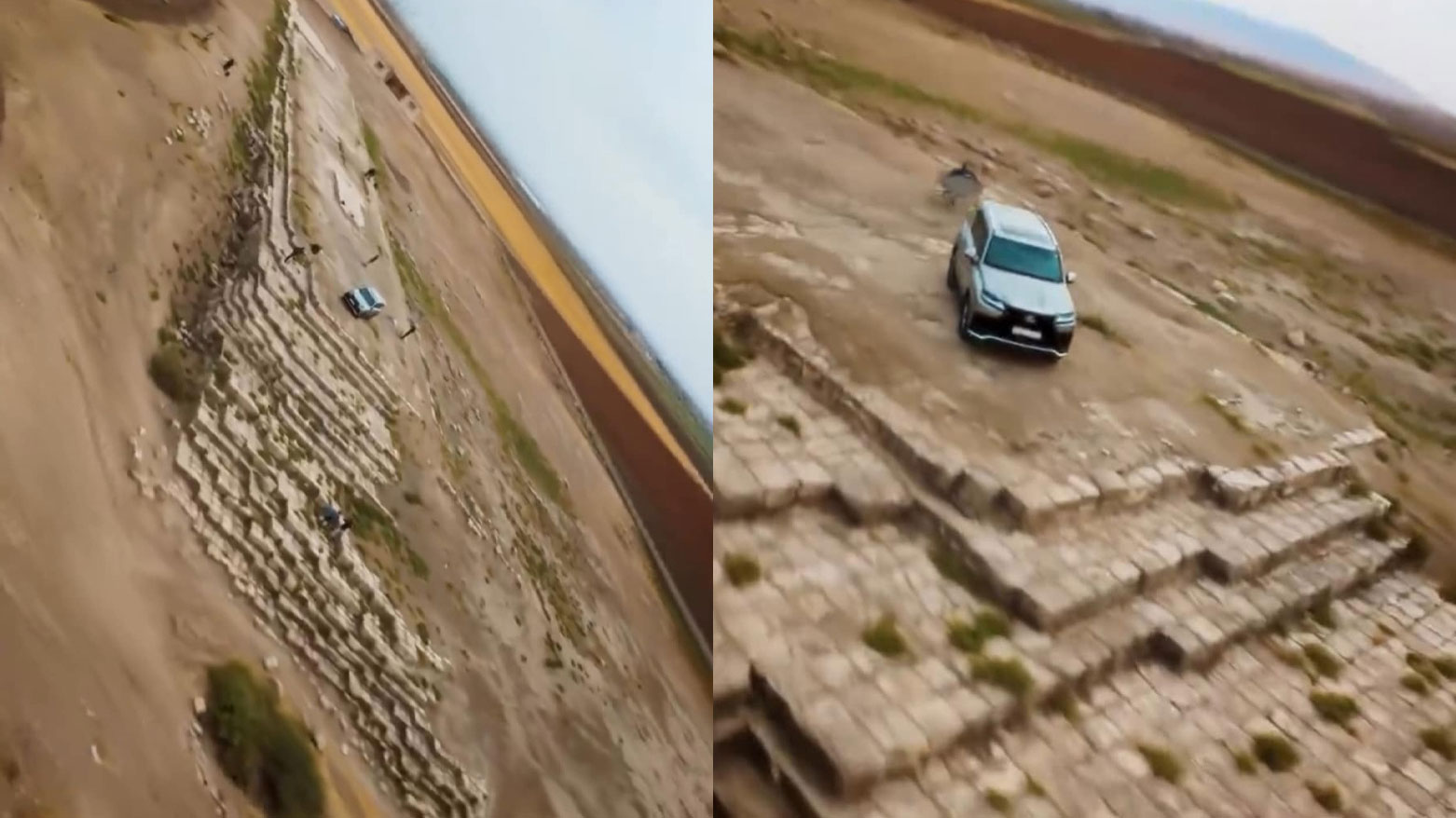Duhok Antiquities Directorate Takes Legal Action Against Lexus for Damaging Archaeological Site
The complaint alleges that the company unlawfully encroached on the ancient Jerwan Aqueduct site, causing substantial harm to the historic landmark.

Feb. 9, 2025
ERBIL (Kurdistan24) – The Directorate of Antiques and Heritage in Duhok has filed a legal complaint against Lexus Company for damaging a significant archaeological site within the province’s borders.
The complaint, submitted to the Public Prosecutor of Duhok and Sheikhan Court, alleges that the company unlawfully encroached upon the ancient Jerwan Aqueduct site, causing substantial harm to the historic landmark.
Bekas Brefkany, Director of the Antiques and Heritage Directorate of Duhok, announced the legal action via Facebook, condemning the company’s actions.
According to Briefkani, Lexus breached the clay barrier marking the restricted zone of the site without prior notification to the Directorate of Antiques. As a result, authorities argue that the company should face the strictest penalties under the law.
Luxury Car Demonstration Sparks Controversy
The controversy erupted after Lexus conducted a promotional event in the Sheikhan district to showcase a new car model.
The company reportedly carried out a demonstration on the Jerwan Aqueduct archaeological site, an event that was later publicized through media channels.
The act has drawn widespread condemnation from archaeologists and heritage preservation advocates, who see it as a blatant disregard for the region’s historical treasures.
The Significance of Jerwana Canal
Jerwan Aqueduct site is a crucial archaeological site located in Jerwan village, within the Sheikhan district. Historical research indicates that the canal was constructed in 690 BC by the Assyrian King Sennacherib.
The engineering marvel, built from approximately two million stones—each weighing between 250 and 500 kilograms—stands at 9 meters high and 20 meters wide, with 13 alternating discharge holes used for water management.
Discovered in 1850 by the French Consulate in Iraq, the Jerwan Aqueduct remains a vital testament to the ingenuity of ancient Assyrian hydraulic engineering. Its preservation is considered crucial to understanding the historical development of irrigation systems in Mesopotamia.
Legal and Cultural Implications
The legal action against Lexus highlights broader concerns about the protection of Kurdistan’s archaeological heritage amid increasing economic and infrastructural development.
Heritage experts warn that commercial activities encroaching upon protected historical sites set a dangerous precedent for the preservation of the region’s cultural identity.
Authorities have reiterated that any unauthorized activities near archaeological landmarks will face legal consequences.
As the case against Lexus unfolds, it serves as a stark reminder of the need for stringent regulations to safeguard Kurdistan’s rich historical legacy from corporate negligence and exploitation.
